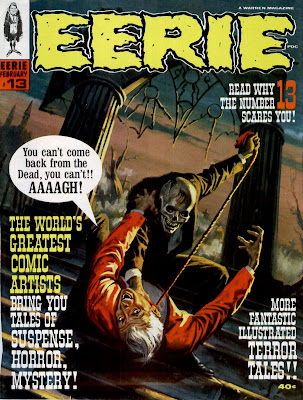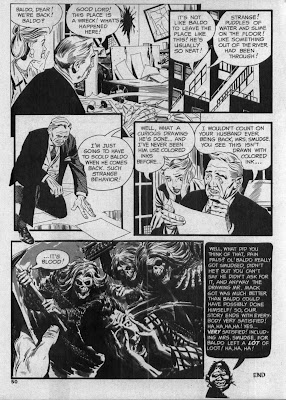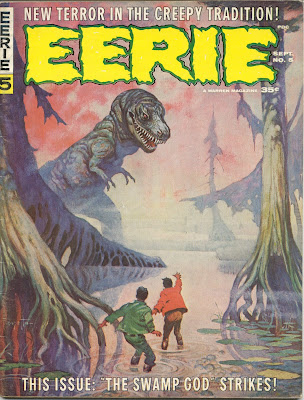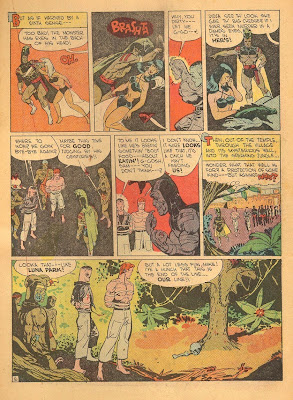
Download Eerie #013
Of particular fame (or is it infamy?) in Warren Publishing lore is Creepy #1's "The Success Story," written by Archie Goodwin and expertly drawn by Al Williamson, which legend has it
 was based on a real-life comic strip artist, Don Sherwood, who, according to George Evans and others, over-relied on "ghost" artists—behind-the-scenes creative contributors who received no credit. The tale, a scathing critique of that all-too-common practice in cartooning of signing one's name to another's work, was allegedly about Sherwood (cast here in the guise of smug comic-strip artist "Baldo Smudge") and his daily strip, "Dan Flagg." Williamson, renowned for using photographic reference, looks to have used the likenesses of Archie Goodwin, and artists Angelo Torres and Alden McWilliams, with Al himself serving as model for Smudge. (It should come as no surprise that all of these creators, also Warren contributors, worked uncredited on "Dan Flagg." Ahh, sweet revenge...!
was based on a real-life comic strip artist, Don Sherwood, who, according to George Evans and others, over-relied on "ghost" artists—behind-the-scenes creative contributors who received no credit. The tale, a scathing critique of that all-too-common practice in cartooning of signing one's name to another's work, was allegedly about Sherwood (cast here in the guise of smug comic-strip artist "Baldo Smudge") and his daily strip, "Dan Flagg." Williamson, renowned for using photographic reference, looks to have used the likenesses of Archie Goodwin, and artists Angelo Torres and Alden McWilliams, with Al himself serving as model for Smudge. (It should come as no surprise that all of these creators, also Warren contributors, worked uncredited on "Dan Flagg." Ahh, sweet revenge...!Note: Eerie #13 reprints this story as it originally appeared in Creepy #1.
Credits
Cover painting: Vic Prezio
Script: Archie Goodwin
Pencils: Al Williamson
Inks: Al Williamson
Letters: Ben Oda
- Reprinted:
- from Creepy (Warren, 1964 series) #1 (January 1965)
- in Eerie (Warren, 1966 series) #13 (February 1968)
- in Comix: A History of Comic Books in America (Bonanza, 1971 series) #[nn]
- in Comix: A History of Comic Books in America (Outerbridge & Dienstfrey, 1971 series) #[nn]
- in Eerie (Gold Star Publications, 1972 series) #4 (1973)
- in Creepy (Warren, 1964 series) #137 (May 1982)
- in Creepy The Classic Years (Harris Comics, 1991 series) #[nn]
- in Creepy Archives (Dark Horse, 2008 series) #1







































